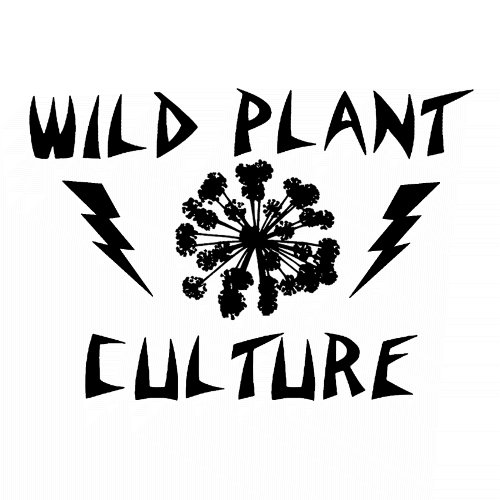Plant Elders

A few springs ago I was struck by the sight of a colony of Mayapples growing in the shade along the trail. Each little green parasol-shaped ramet had recently emerged from an interconnected underground rhizome, unfurling in spiral fashion as it ascended towards its final height, about a foot above the soil.
Mayapples might be counted among a group of forest herbs known as the "immortals" [1]. It's unknown exactly how long they live, but their lifespans are likely measured in decades if not centuries.
So, here was this possibly hundred-year-old plant in front of me, each leafed stem perfect and glistening in the same way that a baby is. Imagine if we looked so good at 100 years old! Would that we could renew ourselves every spring with a freshly grown body.
True, the underground rhizomes of the colony may have been more worn looking. But even these leave tired parts behind to rot and extend fresh growth into new soil. Once interconnected rhizomes each spread their own way, separating as older parts senesce and disappear. The clone might start like a small island and become an archipelago, sundered from itself, over time.
* * *

Downtown Detroit. Hand-tinted photo by Rachel Mackow
Driving through town today -- passed by a few blocks of tightly packed rowhomes looking worn out. Landlord's specials. Old aluminum awnings, tired paint, window panes bent and pinched.
All these synthetic materials we use to thwart decay -- plastic, metal, fiberglass, chemical paints -- the moment we put them together, they start to fail us. As short as our lives are, most of what we makes lasts even less time than we do. The rusty old Chevy out back with the trumpet creeper poking through the windshield, the "L'il Tykes" plastic slide sitting curbside, bleached and cracking...
Growing up a city kid, I never noticed the filth, every surface an archaeology of grime and gumwads and a hundred minor collisions. Every bodega awning advertising not just cigars and bread but grafitti, pigeon shit, half-removed stickers, and rust streaks.
When we moved to the woods, we didn't go back to the city for a while. We crossed Cat Tail Brook instead of Broadway, tracked mink and raccoons instead of watching the buildings blur by through the window of the elevated subway en route to Queens.
One winter day, we decided to visit an old friend and truck around the city for a day. After a few years of cultivating awareness in the woods, the frenzy of emotions and simultaneous evasions was intense. I latched on to every passing face, processed every scowl, smile, shout and shove.
Mostly, though, I was shocked by how worn out everything looked. If it wasn't brand new in a store window, it was busted and beaten and gray. Everything was on the path to becoming garbage, most of it was well on its way.
As a kid... I had never noticed. I loved growing up in the city, with so much to explore, so much freedom to ramble and take it all in. I like living in the woods even more -- for the same reasons.
* * *
One of the fundamentals of our physical reality is the assault of erasive forces on all things. Our creations, especially, are subject to winds, water, freezing and thawing, sun, fire, and a plentitude of organic agents of decay. Few of our creations outlive us. We rarely discuss it, but we're assailed by impermanence.
The natural world decays differently from the objects we make. Life is always renewing itself, and it is always changing form in order to do so. Rarely is there an attempt at permanence among organisms. We reproduce, rather than persist, probably because long-term persistence just ain't happening.
* * *

Old growth Nyssa sylvatica, known to live up to 700 years
It is often remarked that trees remind us of ourselves and are the most people-like of plants. Perhaps this is not just because of their outstretched arms and upright posture.
Unlike mayapples awakening fresh every spring, trees have chosen the path of lignification, of permanent structure, of wood, trees are like us, showing old wounds, exhibiting poor posture with age, failing suddenly and dramatically when their structure is compromised.
* * *
Mayapples are not the only long-lived herbaceous plants spreading rhizomatously through the forest. That lifeway is prevalent among forest species. Evolving in a habitat where major disturbance was sporadic, individual plants presumably had to persist on a considerable time-scaleand could not count on there being regular sites for recruitment from seed in order to perpetuate.
Time must be scaled differently in an old-growth forest, with centenarian herbs and trees living a half-millenium.
* * *
Longevity information for wild plant species is scant, here are some notable examples from the book Planting The Future [2]:
Devil's Bit (Chamaelirium luteum): 80 years
Trillium: 72 years
Ginseng: 50-60 years
Lady's Slipper: 39+ years
William Cullina [3] reports on a hybrid Osmunda fern in Virginia, aged at 1,100 years... a hybrid of interrupted fern and royal fern-- the former pretty much unchanged from a fossil specimen of an ancestral species from 220 million years ago!
In Leslie Jones Sauer's Once and Future Forest
Planting the Future: Saving Our Medicinal Herbs edited by Rosemary Gladstar and Pamela Hirsch
In Native Ferns, Mosses, and Grasses.
